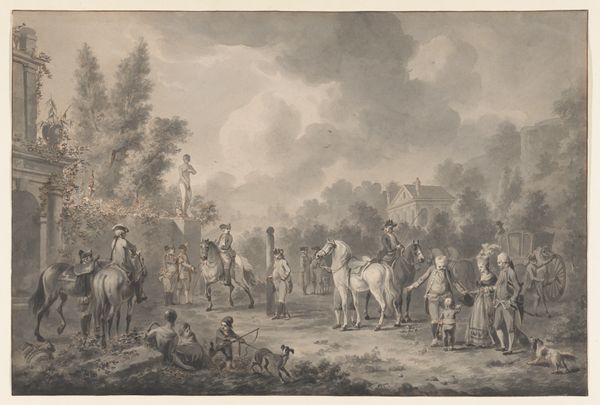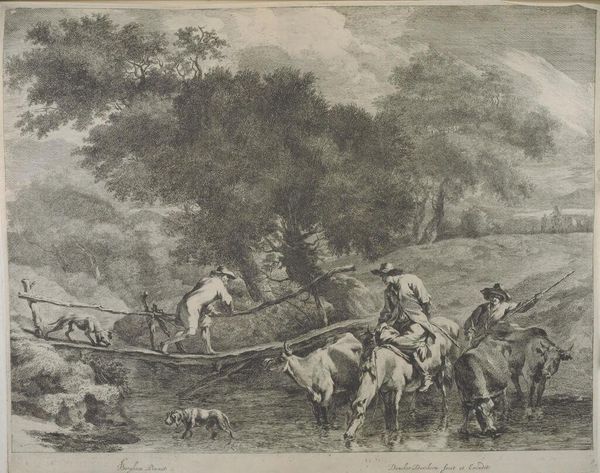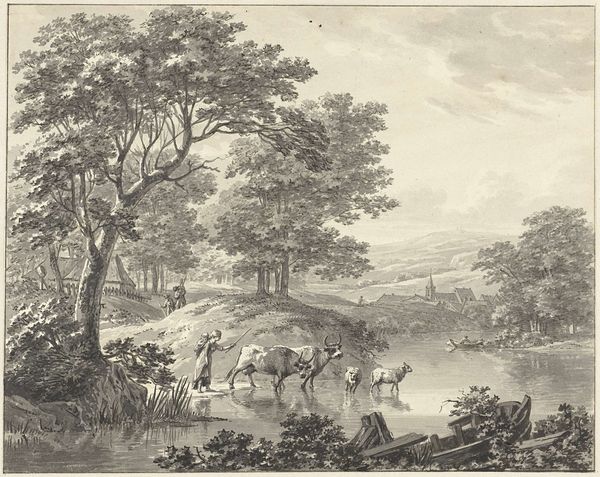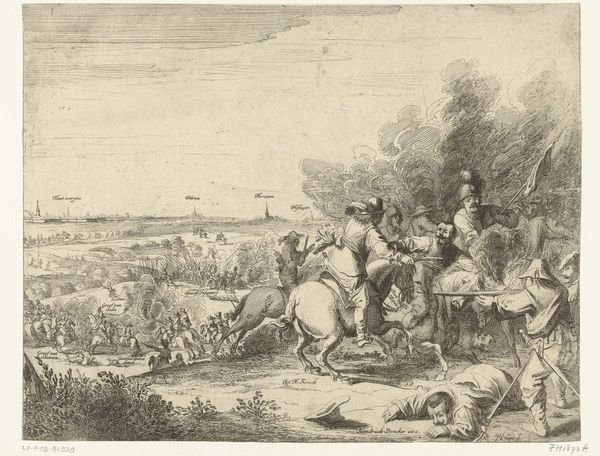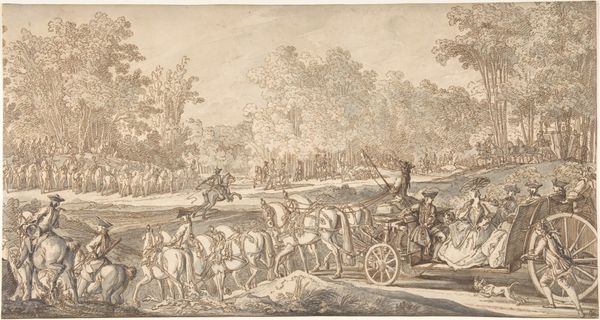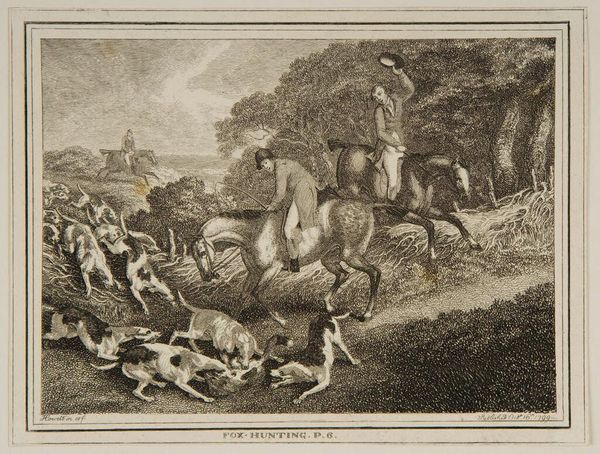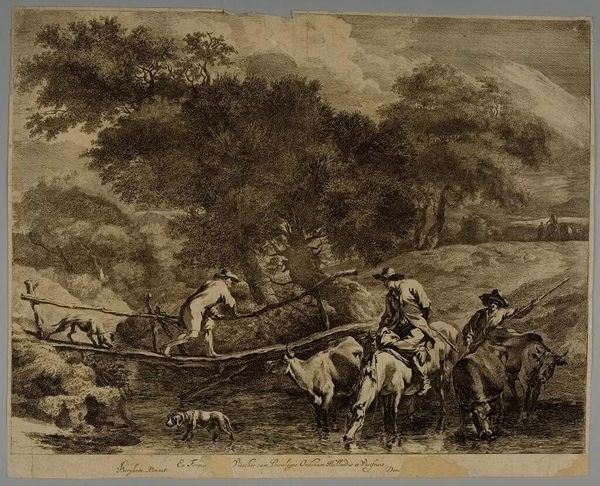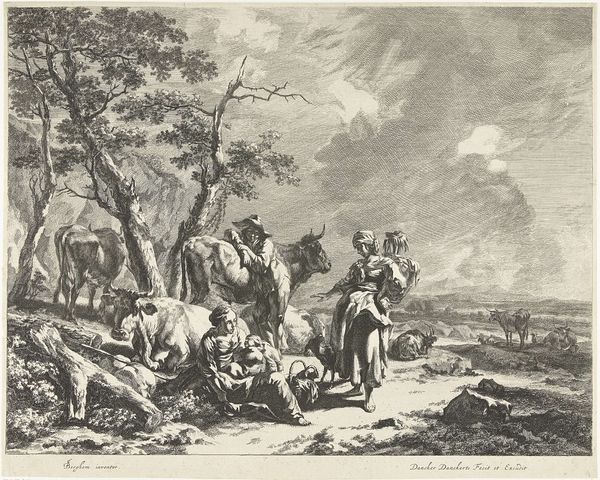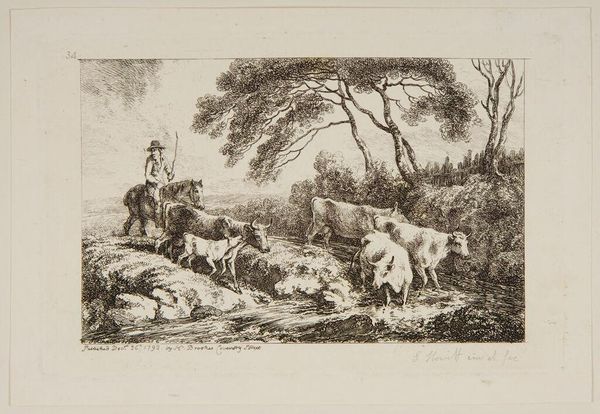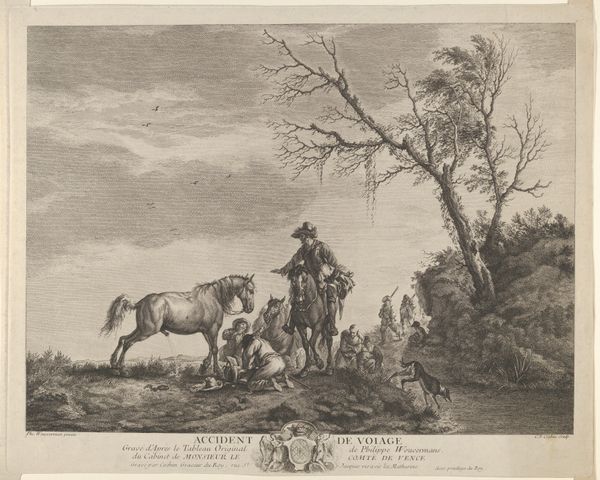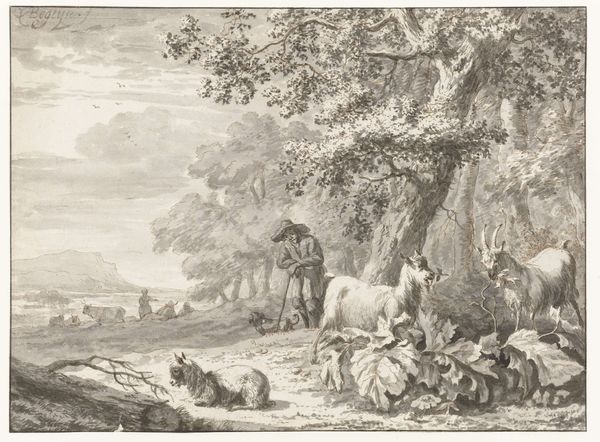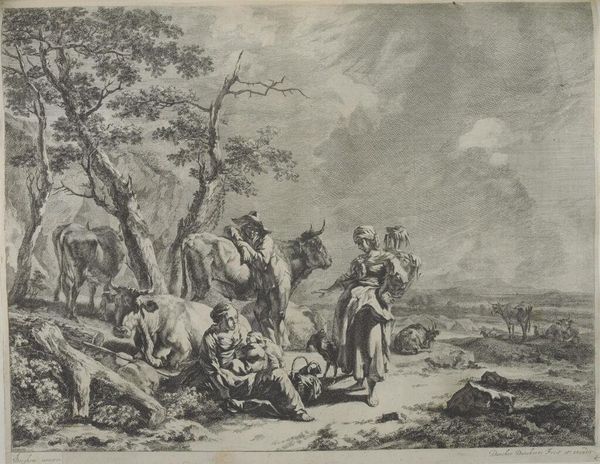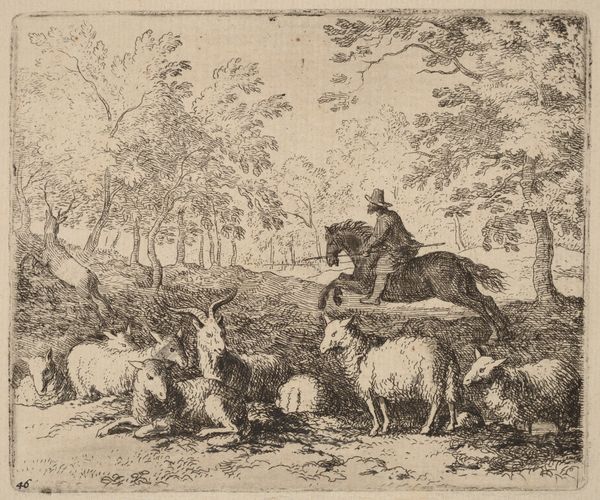
painting, oil-paint
#
baroque
#
painting
#
oil-paint
#
landscape
#
oil painting
#
genre-painting
#
history-painting
#
rococo
Copyright: Public domain
Curator: Immediately, I’m struck by the frenzy, that energy in the flurry of hounds charging through the water. The air of privileged nonchalance amongst the riders adds an interesting contrast, doesn't it? Editor: It does indeed. What we're seeing here is Jean-Baptiste Oudry's "Louis XV (1710-1774) Stag Hunting in the Forest at Saint-Germain," completed around 1730 using oil paint. It really speaks to the period. Curator: Oh, absolutely. The hunt itself has deep roots as a ritual. Kings throughout European history adopted hunting as a symbol of authority. Louis the XV is performing his kingship, he is asserting control over the natural world in a theatrical demonstration of dominance. Editor: Indeed. Oudry uses specific iconography to amplify this symbolism. Water has always had connotations of purity and purification. The Stag, by contrast, embodies natural virtue, as a symbol of both virility and sacredness since antiquity. So, the pursuit suggests the monarch as protector of virtues of the old world, yet asserting dominance over those virtues at the same time. Curator: I completely agree. The location matters too; Saint-Germain was a favored royal domain. Depicting the King here isn't just about him; it's about reinforcing the image of France's stability and opulence under Bourbon rule. It is a deliberate projection of political power for his court. Editor: Looking at how Oudry renders the scene technically, notice how light filters through the trees, dappling the water and figures, giving it a vibrant, almost theatrical feel? It evokes those fleeting, idyllic moments associated with rococo sensibilities. The artist, I think, invites us into that very specific kind of ideal world. Curator: Very much a world orchestrated for spectacle. The composition subtly implies a hierarchy. The King and his retinue are slightly elevated, overseeing the action, positioned centrally. It all works towards glorifying his reign and positioning him within a narrative of grandeur. Editor: Well, I certainly see a carefully crafted tableau, both aesthetically pleasing and rich with symbolic meaning. It provides fascinating insights into how art served the French monarchy’s image-making. Curator: Precisely, art as a tool and reflection. It makes you wonder about what similar displays communicate today.
Comments
No comments
Be the first to comment and join the conversation on the ultimate creative platform.
